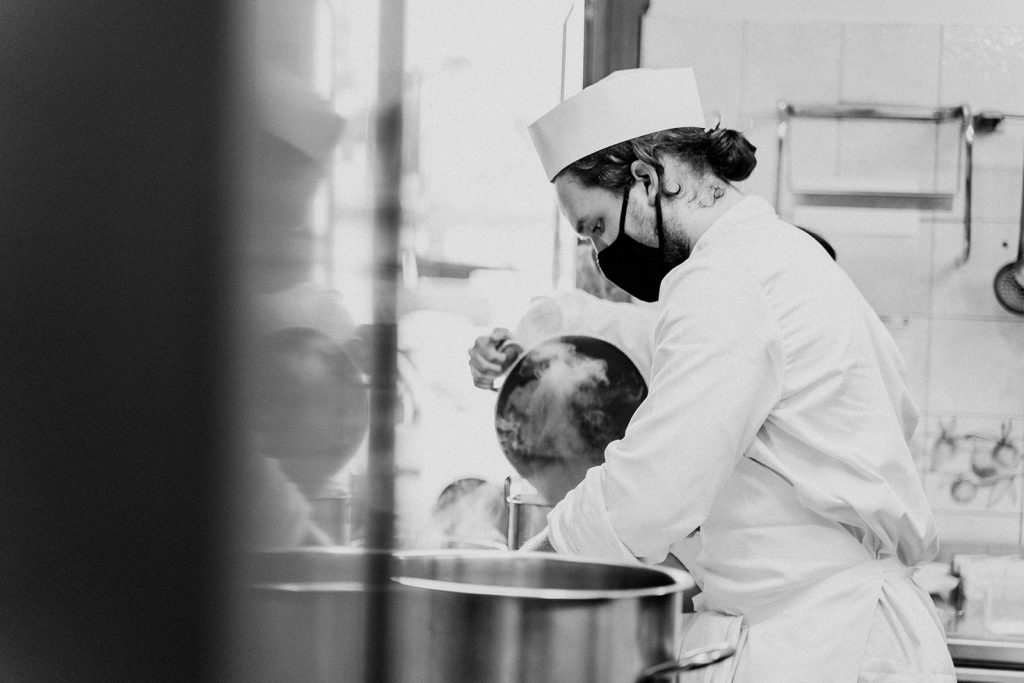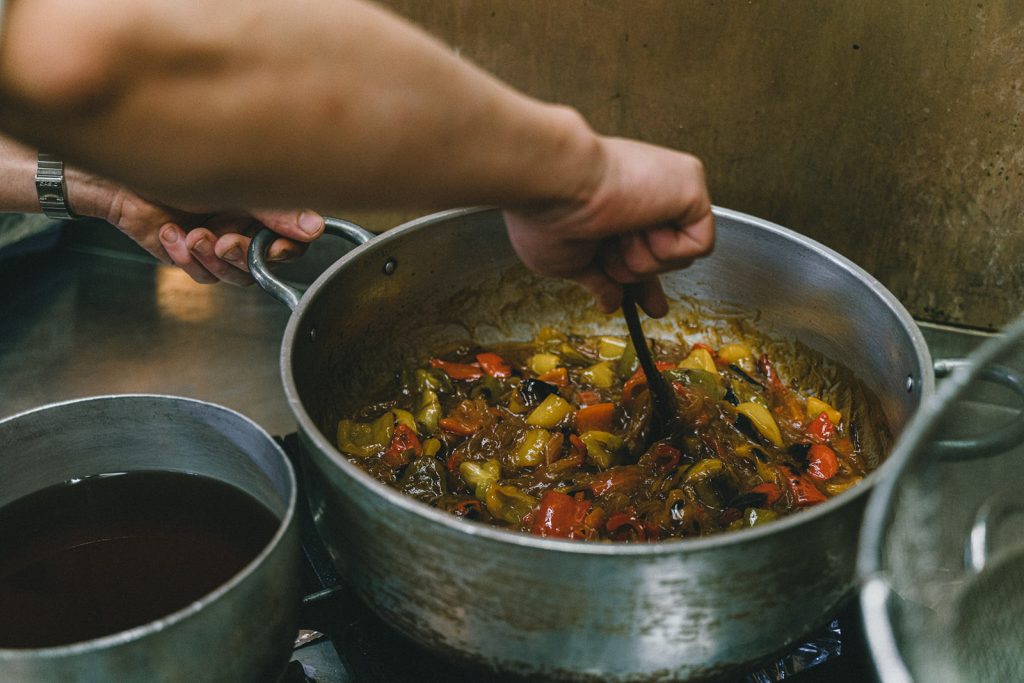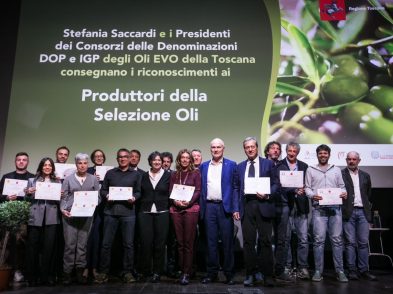My first taste of Cibrèo was one of those life-affirming moments that I can pin onto the timeline of my existence as a food writer. It was the moment I discovered what it was to eat in Tuscany as opposed to in Italy. I went into Cibrèo for lunch alone, shortly after I moved to Florence, and still remember everything I ate: a tray of antipasti—a sundried tomato, a tiny preserved artichoke, a crostino di fegatini, some honeyed prosciutto—followed by mackerel on sourdough toast, drizzled in new season olive oil, a yoghurt and turmeric gelatine (which we’ll come to later), and a slice of cheesecake topped with bitter orange marmalade. Without exaggerating, every mouthful was exceptional. At the end of my lunch, I’d clearly been making noises of contentment because a fur-clad older lady came over and told me with approval that I was a buona forchetta. “You eat a lot, but in a good way,” as my friend Edoardo put it.

Over the next two years I returned to Cibrèo many times, alone and with friends: to the Parisian-style all-day caffè, the restaurant, the trattoria, the Tuscan-Asian outpost Ciblèo and their newest franchise with the five-star Helvetia & Bristol Hotel. I was hooked into the tiny culinary empire and it became my glutinous refuge. I also had the opportunity to interview Fabio Picchi, the visionary and sometimes terrifying white-haired genius behind Cibrèo, and his son, Giulio, on multiple occasions. Cibrèo’s concept is simple—home-style and long-forgotten Tuscan recipes, with a focus on quality and provenance—but the effect on the little quarter of Sant’Ambrogio and the wider dining scene in Florence is immeasurable.
Cibrèo’s concept is simple—home-style and long-forgotten Tuscan recipes, with a focus on quality and provenance—but the effect on the little quarter of Sant’Ambrogio and the wider dining scene in Florence is immeasurable.

Fabio was not everyone’s cup of tea: some saw him as gruff and a little arrogant, while others still resent the steep prices for what they perceive as peasant dishes. When he died somewhat unexpectedly at the age of 68 a few weeks ago though, all agreed that the loss of this larger than life presence would be sorely missed in Florence. A couple of years ago, the Cibrèo dynasty came up with the idea of launching Schola Cibrèo, a culinary academy to spread the ethos of how they operate their food businesses. It would be a way to pass on not only specific Tuscan recipes—ribollita, lampredotto and arista al forno—but to adapt the principles of seasonality and nose-to-tail cooking to anywhere in the world. The idea is an immersive 10-week programme, intended to take students through every aspect of the professional kitchen. A large part of students’ time is spent in the kitchens of Cibrèo’s various restaurants, learning under the guidance of long-serving chefs.

I joined the three students for a couple of weeks of the course this spring, a unique chance to see inside the world of Cibrèo. The first week, I went along with another student to the Helvetia & Bristol. It’s a good place to start if you’ve not spent time in a professional kitchen, explained Karin Pantzer, who oversees Cibrèo Culinary Academy, aka Schola. Head chef Gabriele Avanzi was immediately warm and welcoming, letting us slot into proceedings and see how things are done in the spacious kitchen. We peeled kilos of asparagus, chopped and gutted moscardini, and rolled fresh tagliatelle, but mostly we just watched and absorbed the rhythm of the kitchen.

The second week, the real magic started. I was transferred to the Cibrèo Ristorante, founded in 1979 and almost unchanged since. We were under the remit of Renata Brumana, who put us to work with a trusting patience and mercifully clear instructions. Not only were we tasked with menial activities—dice a kilo of carrots; chop 10 leeks, finer, no finer!; fill these piping bags—we were given recipes in Italian to follow. Before our eyes, the culinary principles were turning into fully formed dishes. Tray upon tray of creamy, wobbly gelatine infused with turmeric and olive oil, a sort of savoury panna cotta that has been a signature antipasto at Cibrèo for decades, were being poured out and chilled for service.

There were awkward moments naturally, such as when chef Renata came through carrying a giant pot of steaming broth and asked me to fetch a teglia. I looked at her blankly, in pure panic. “Sotto il sottolio!” she shouted. It turns out it was a tray she needed so urgently and someone else swept in to assist. We laughed about it in the end, but the two weeks were peppered with humbling reminders of how little writers know of food compared to those doing the cooking.
Recipe: Cibrèo’s jellied turmeric yogurt
Blend a kilo of Greek yogurt, after having salted it to taste, with half a teaspoon of chopped garlic, then add 100g of good olive oil, a generous grind of black pepper and a heaped teaspoon of turmeric, plus a pinch of ground red pepper, and lastly the juice of one well-squeezed lemon. Take a ladleful of this mixture, heat and dissolve 15g of gelatine in it, or 8-10g of agar agar if you’re a vegetarian.
Stir the mixture until smooth and even, then pour it into individual disposable aluminium molds. You can fill 15 to 20 molds.
Refrigerate for 3 hours, then dip the molds rapidly in warm water and cut a little hole in the bottom with a sharp knife. Turn the molds out onto a platter at room temperature, dribbling a little olive oil over them as a final touch.
This recipe is adapted from Papale Papale. Thoughts and Recipes to Nourish Your Soul by Fabio Picchi








